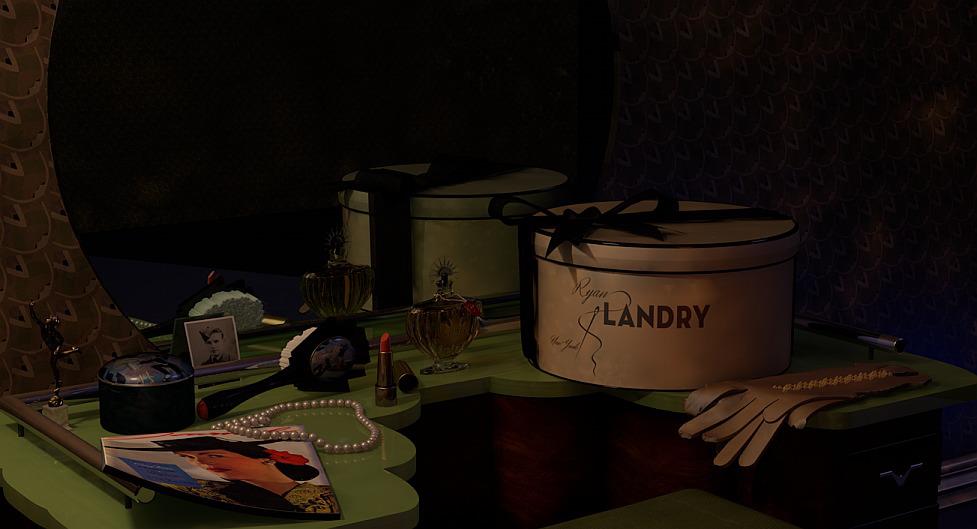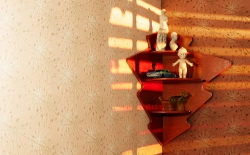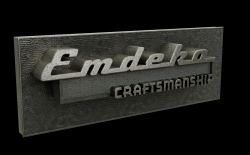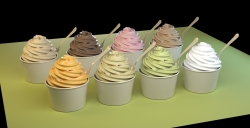-
Posts
1,167 -
Joined
-
Last visited
-
Days Won
8
Content Type
Profiles
Blogs
Forums
Gallery
Pipeline Tools
3D Wiki
Plugin List
Store
Downloads
Everything posted by rasputin
-
Hey guys, Perhaps you can help me. I've got this bird model rigged, and its weights painted, as you see here. I want to create a realistic "bird wing flap", in which, when the joints nearest the body are rotated up and down, the child joints also rotate themselves accordingly, but with a drop-off in joint angle as you move towards the wing tip. Thus, if Joint 1 rotates 40°, the next joint will rotate 30°, the next joint 20°, and so forth. Thus you get a graceful and fairly realistic wing-flap, both up and down. At present, each Joint chain is set up for FK, not IK. How do you set up those mathematical relationships between the wing's joints? I'm new at rigging, and thus still about dumb when it comes to these things. It's probably something easy or obvious, I'm just unfamiliar with it. My ultimate goal is to create a Motion Clip in which the wings continually flap (over the duration of a longer anim). Thanks, ras bird flying.c4d
-
Hey gang, Perhaps you can advise me: I've never been able to make the Muscle and MSkin objects work at all, no how, no way. I have the Helpfiles open, have watched two tutorial videos on YouTube, but all to no avail. The Helpfiles are crisp and breezy..... TOO crisp and breezy. They don't spell out in detail how to make Muscle Objects work, but seem to gloss over important concepts. I can't seem to bind the Muscle to my mesh object, or make it function with the rigged Joints. I can't even make the Muscle contract or extend. What is the secret here? Is there a more detailed explanation somewhere I don't know about? I'm in R26 . Thanks, ras
-
From the album: Rasputin's Gallery III
My main purpose was to see if I could create that gobo effect on the walls. Corona doesn't natively permit this effect, so you have to deploy a C4D light to get the gobo effect. -
As long as I can remember, C4D has offered that checkbox under Render Settings that says "8-bit dithering" What does that mean, please, and how does 8-bit dithering affect your final render? Is it highly important that one either click or un-click this? Thanks, ras
-
Thank you, Sharpears!
-
Hey guys, I have a bit of a n00B question, regarding the implementation of complex IOR values (eta + kappa) per each of the RGB wavelengths: Are complex RGB IOR's only used with metallic objects? Do non-metals also have complex IOR values per each of the RGB wavelengths? (In my own case at the moment, I'm considering the values for human blood.) Thanks, ras
-
I don't even know what a Lidar scan is. I must investigate. Sounds like it is an expensive piece of kit? [UPDATE--->] Okay, looking online, now I see what LiDAR technology is. Very cool. I see you can even do a scan using an Apple iPhone.
-
That "knit stitch" snippet was provided by Corona itself. I agree: coming up with a single pattern that is seamless on all six sides can be tricky. Perhaps using a "mirror/symmetry" plugin during modeling can make it easier?
-
I had become accustomed to attempting this sort of design using MoGraph... but that involves placing objects on another object's vertices or poly faces. This Corona pattern method seems to be simpler and less taxing upon one's computer resources...
-
You're using a bitmap to create those letters, yes? Maybe one you tweaked in Photoshop? I'd say that's where the problem lies: the bitmap you're using is either: 1). Not high-res enough... go for at least 600dpi, or 2). What we're seeing is "lossy" JPG "blocky" artifacts. Try using a high-res PNG file. In P'SHOP, soften your greyscale letters using a Gaussian blur, rather than using their native soft/hard chisel to simulate an Emboss. Lastly, the Bump protocol lacks the finesse of a Normal file, IMHO, and I eschew it whenever possible. Convert your Bump map into a Normal file, or create one in P'SHOP using the NVIDIA TOOLS, or, barring that, use the Normalizer shader within C4D. Let us know if this helps!
-
I'm only getting our usual animated banner, up top, advertising DRIVE! and COLOSO. Otherwise, no ads at all.
-
Here's a practical example of Corona Pattern in action: Shown is your basic seed Pattern, seen from two different angles. Note that it is a fully-fledged 3D object, with two (Corona) materials added. The pattern object could be absolutely anything, as could its materials, but this pattern is a kind of "knit stitch" comprised of two interlocking "yarns", red and yellow. Designed to repeat seamlessly... on all six sides. The third image is this seed pattern, applied to a larger object... which, likewise, could be any 3D object at all, but here is an ordinary Sphere. You can control how "coarse" or how "fine" is your application of the seed pattern. It's all determined, not by your target object's vertices or poly faces, but rather by its assigned UV's.
-
Yep... Corona Pattern seems to be a variant of Corona Scatter. The sole difference is that Pattern casts the individual 3D "pattern" units in a regular pattern, defined by the UV's of your larger target geometry (not the vertex points or poly surfaces, but the UV's).
-
There is a slight slowdown during the initial casting on of GI rays, just after you click Render... but it's not a big deal at all... We're talking two minutes maybe?
-
Here I use Corona Pattern to create a tweed style textile to a padded chair:
-
Thanks, EA! Corona Pattern is easy once you get the hang of it. But I did have a bit of a learning curve at first.
-
Hey guys, Just thought I'd show you my latest experiments: I've been creating them using the Corona Renderer For C4D feature called Corona Pattern. Corona Pattern will take any little 3D object you create, and use it as the "building block" or "seed" for a larger 3D object you've created. It's kinda like creating a "single stitch" which will be compounded to form a "whole cloth". As I understand it, Corona Pattern is a form of "Scatter" which will take your little 3D object and "scatter" it across a larger object in an organized way. Thus you can create sophisticated "cloth fabrics" which have highly detailed "stitches" forming it. The results you get are more sophisticated and realistic than anything you could do using Displacement, Opacity, Bump and Normal maps, for instance, because the individual "stitches" or "building blocks" are not illusory or dependent upon greyscale maps... they're real 3D geometry with assignable materials, which will exist in light and shadow like any 3D object. But the process does not use up a lot of CPU or memory, and your renders develop as fast as any other kind of render. The effect is not seen in your modeling viewport, but is seen only upon render (with Corona Render, of course). I have been experimenting with it in order to create fascinating "woven and knitted cloths", "pailletted cloth" and "chainmail" type renders. I'd think it would look killer when used as a tweedy/nubbly textile surface for a sofa or chair in an Interior Archviz. But it occurs to me that there might be many more situations in which this effect could be used... to create the facades of buildings, perhaps, or surfaces of sci-fi objects. Thoughts? ras
-
From the album: Rasputin's Gallery III
In which I was trying to reproduce the look of aged metal as closely as I could. -
Cerbera: at first I thought I could just sweep a star spline primitive over a helix spline. But that was unconvincing, and did not look like the ice cream photos I was looking at on Google Images. And the Star spline primitive wasn't quite right, either, because its "teeth" weren't acute enough at their tips. My final solution was to create a special star shape in Illustrator... merge it into C4D, then extrude it into a long pipe shape. Then I used a "Twist" deformer to twist the long star/pipe shape along its length. This was key, I observed, because the real-life ice cream swirls get twisted AS they distribute the ice cream into a pile. From there I used the Spline Wrap deformer to bend that twisted pipe into a spiral shape using the Helix as my spline. That basically worked, but was too sharp-edged. So exactly as you observed, I ran it all through the Volume Builder to soften the overall look and let the "ice cream' sort of melt into itself at various junctures. From there I just tried to make my Material include all the little qualities of a semi-frozen milk-based product... lots of SSS, AO used to make tonal variations, and my attempt to make the surface "sparkle" a little bit to represent frozen crystals. There is a frozen yogurt store in my town... and these 8 flavors are the ones they serve. vanilla, chocolate, strawberry, coffee, mango, banana, green apple and unflavored.
-
-




